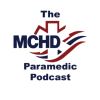There is no possible way to improve ketamine, right? In this episode of the MCHD Paramedic Podcast, join our host, Casey Patrick, MD, FAEMS, assistant medical director for the Montgomery County Hospital District EMS, for a discussion of exciting recent literature investigating the effectiveness and safety of nebulized ketamine for emergency department analgesia. Everyone’s favorite EMS medication may be primed for an enhanced delivery option.
Read next:
Understanding prehospital ketamine: Dosing to drawbacks
In the right patient, with a solid understanding of the pharmacology and a plan to address potential side effects, ketamine can be an incredibly useful tool for EMS
References
1. Dove D, et al. Comparison of Nebulized Ketamine at Three Different Dosing Regimens for Treating Painful Conditions in the Emergency Department: A Prospective, Randomized, Double-Blind Clinical Trial. Ann Emerg Med. 2021 Dec;78(6):779-787.
2. Rhodes AJ, et al. Nebulized ketamine for managing acute pain in the pediatric emergency department: A case series. Turk J Emerg Med. 2021 Apr 9;21(2):75-78.














